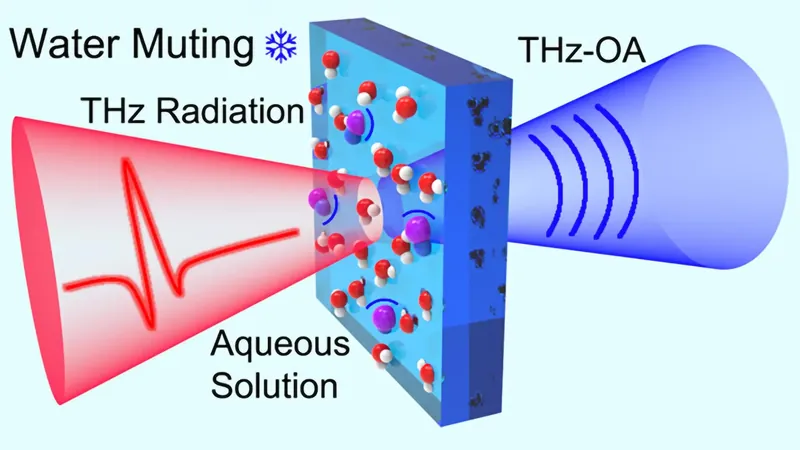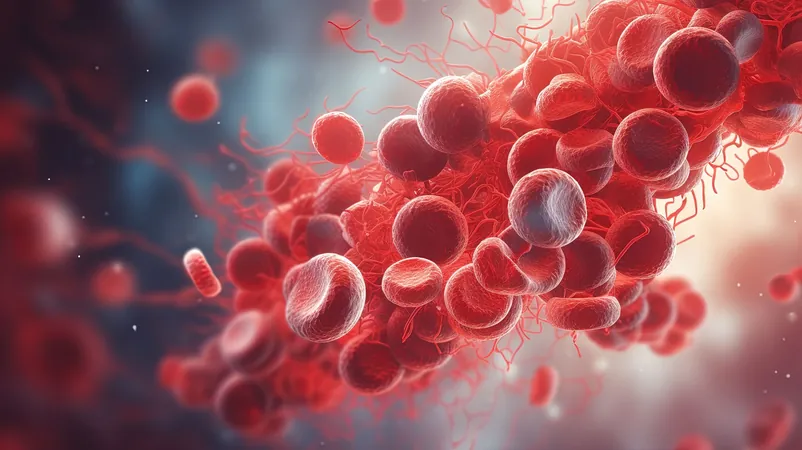
Revolutionary Tech Promises Blood Sodium Tracking Without Needles!
2025-07-06
Author: John Tan
Say Goodbye to Needles!
Imagine a future where tracking your blood sodium levels doesn’t involve a single needle prick! Thanks to groundbreaking advancements in terahertz technology, this dream is becoming a reality.
What is Terahertz Technology?
Terahertz radiation lies between microwaves and mid-infrared waves in the electromagnetic spectrum. It's a low-energy, harmless option that scatters less than visible light, making it perfect for biological applications.
A Game-Changing Discovery
Researchers, led by Zhen Tian of Tianjin University, have tackled two major hurdles in biomedical science: detecting molecules beyond just water and penetrating thick tissue layers. By integrating optoacoustic detection into their system, they achieved in vivo detection of ions using terahertz waves—setting a new milestone for clinical application.
How Does It Work?
The new terahertz optoacoustic system provides a noninvasive way to monitor sodium levels in live mice without any labels. Early tests with human volunteers show promising results. This could pave the way for real-time monitoring of sodium concentrations in patients, drastically reducing the need for blood draws.
Why is This Important?
Rapid changes in sodium levels can lead to serious neurological issues. Immediate and accurate monitoring could prevent medical complications, ensuring patients receive timely interventions.
Cracking the Code of Water Interference
Water has always posed a significant challenge by absorbing terahertz radiation. The researchers have countered this by developing a system that emits terahertz waves into the sample. As sodium ions bonded to water molecules vibrate, they generate sound waves that an ultrasonic transducer captures. This innovative conversion effectively bypasses the water absorption barrier, enhancing detection.
Impressive Results Are In!
During experiments, the team successfully tracked sodium levels in live mice, capturing fluctuations within milliseconds over more than 30 minutes. They've also able to distinguish sodium levels in human blood rapidly and could even measure levels noninvasively in healthy volunteers!
The Path Ahead
For human application, researchers need to identify the best detection sites that can tolerate cooling and minimize water background noise. They’re also exploring innovative signal processing techniques to enhance detection without the cooling requirement, making this noninvasive approach viable for clinical environments.
Potential Beyond Sodium Detection
The implications of terahertz optoacoustic technology extend beyond just sodium measurement. Its capability to identify various biomolecules—including sugars, proteins, and enzymes—opens doors to new medical diagnostics and treatments. The future of painless monitoring in healthcare looks bright!




 Brasil (PT)
Brasil (PT)
 Canada (EN)
Canada (EN)
 Chile (ES)
Chile (ES)
 Česko (CS)
Česko (CS)
 대한민국 (KO)
대한민국 (KO)
 España (ES)
España (ES)
 France (FR)
France (FR)
 Hong Kong (EN)
Hong Kong (EN)
 Italia (IT)
Italia (IT)
 日本 (JA)
日本 (JA)
 Magyarország (HU)
Magyarország (HU)
 Norge (NO)
Norge (NO)
 Polska (PL)
Polska (PL)
 Schweiz (DE)
Schweiz (DE)
 Singapore (EN)
Singapore (EN)
 Sverige (SV)
Sverige (SV)
 Suomi (FI)
Suomi (FI)
 Türkiye (TR)
Türkiye (TR)
 الإمارات العربية المتحدة (AR)
الإمارات العربية المتحدة (AR)